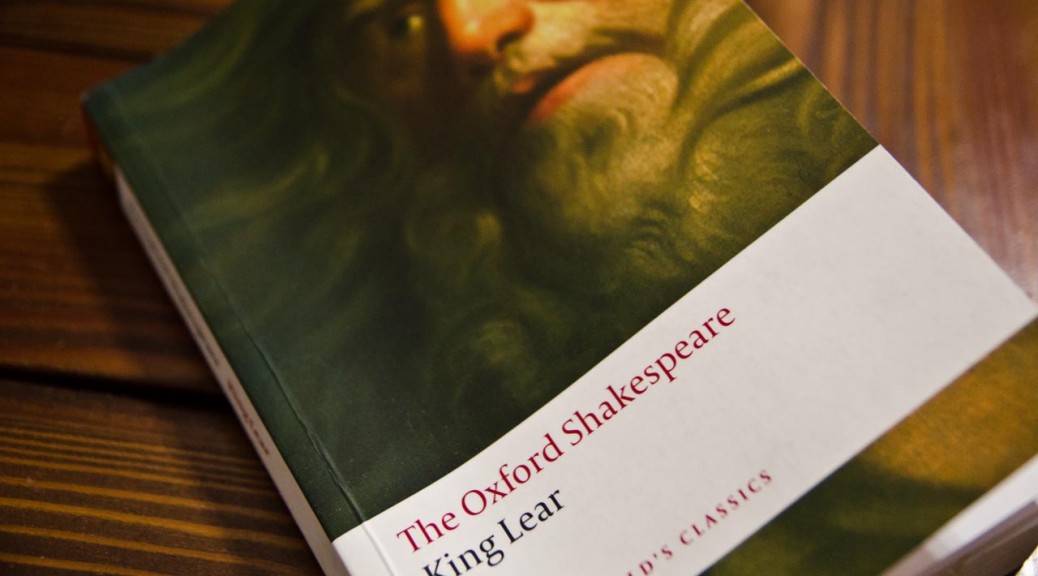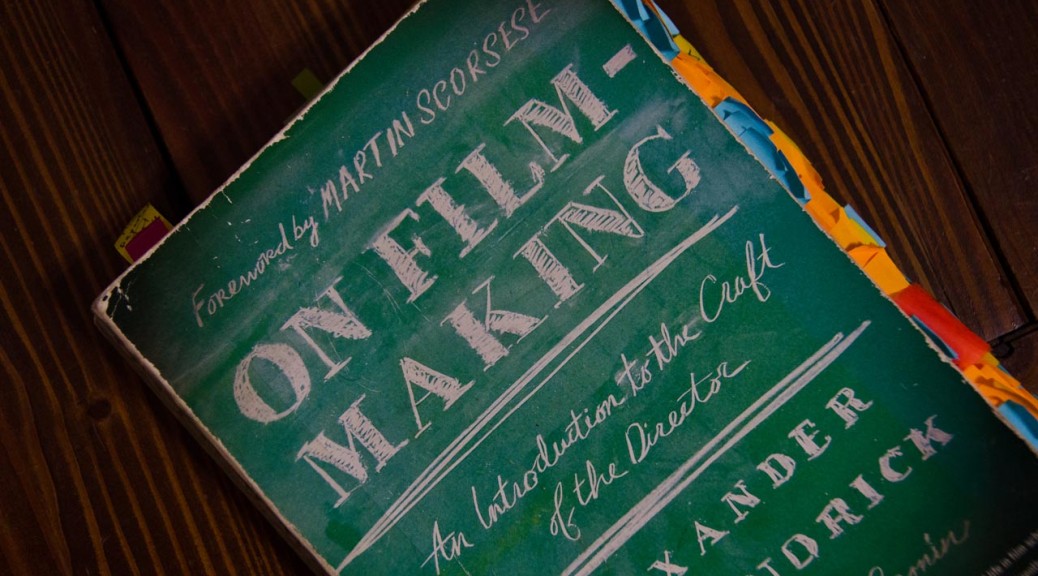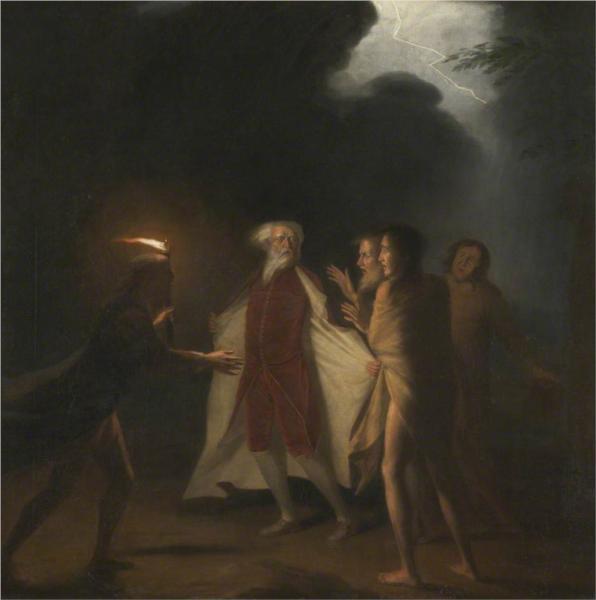Wrote a short scene inspired by Fargo’s state trooper and passing motorists murder scene.
Category Archives: cinema
Nightfall
Watched:
On Dangerous Ground (1951) Nicholas Ray
Nightfall (1957) Jacques Tourneur
Read:
Fargo screenplay (Coen brothers)

Fargo | Dramatic construction
Bambi vs. Godzilla
Mamet, David. Bambi vs. Godzilla: On the Nature, Purpose, and Practice of the Movie Business. Kindle Edition. 2007.
Bambi Meets Godzilla | Marv Newland (1969)
“To succeed, a film must treat the audience member as an audience member, not as a commissar of culture.” location 698
“The commissar gets her thrill not from the film but from the power to admonish.” location 699
real filmmakers “Will they fail? Certainly. Both artistically and commercially. But (a) they have no other choice and (b) realizing that their final choices must be essentially subjective, they may learn to trust their instincts. Also (c) they’ll have more fun.” location 702
“Like any human endeavor, like you and me, they have inevitably been exposed to and have, in the main, submitted to the power of self-corruption, of self-righteousness, to the abuse of power. But like General della Rovere, like you and me, like the studio executives, they possess the possibility of beauty and, hence, for human transformation: not as preaching, not as instruction, not as doctrine—all of which, finally, are out of place in the cinema and can awaken, at best, but self-righteousness.” location 740
“The garbage of exposition, backstory, narrative, and characterization spot-welds the reader into interest in what is happening now. It literally stops the show.” location 866
***”When the film turns narrative rather than dramatic, when it stands in for the viewer’s imagination, the viewer’s interest is lost.” location 1040
***”The writer may choose to supply stock, genre, or predictable answers to the magic questions, and the drama will be predictable and boring. The writer will have saved himself the agony of indecision, self-doubt—of work, in short—and so, of course, will the protagonist.” location 1230
“The gags, here, happen to be identical to Aristotle’s “incidents,” that is, those occurrences without which the plot cannot move forward.” location 1391
“Shoot an entrance and an exit. It’s free.” location 1627
***”Our ability to conceptualize about both the process and the product is accompanied, and inspired, by the pure animal joy of submersion in a mystery.” location 1653
“Wisdom, therefore, lies not in the phenomonological question “What does a duck look like?” but, rather, in the practical “What is a duck looking for?”” location 1658
******”one may learn to prevail through understanding rather than strength—the basic tenet of jujitsu” location 1668
“Well, the poor man, unhampered by the capacity to waste, was forced to employ thought, and he wondered: What does a duck like? How does a duck see?” location 1678
“We have all had the experience of saying of a statue, “How lifelike,” and, of a life mask, cast from the human form and painted to perfection, “How lifeless.”” location 1679
“For the actual human being and the actual duck were created by, and so contain, a mystery. They cannot be reduced to mere measurements, and all attempts to do so (whether through the caliper of the decoy maker or through the audience testing of the social scientist) result in lifeless parody.” location 1681
“For another name for “chance” is “mystery,” and another name is “art.”” location 1685
“Jewish rabbinical tradition notes that adultery is like murder, for it is a crime that cannot be undone. Violation of the aesthetic distance is a rupture of the artist’s compact with the audience, and, similarly, its rupture cannot be mended.” location 1790
***”the difference between enjoyment and stimulation. One leaves the ballet feeling refreshed, as a promise has been fulfilled. One quits the video-game or pornographic film feeling empty and vaguely debauched—for one has only been stimulated. The brain, here, craves a repetition of the stimulation, as with any drug.” location 1833
“One may sit in front of the television for five hours, but after King Lear one goes home.” location 1835
*****”violence—their belligerence masks their fear and displays their ignorant belief that battles are somehow won by intimidation.” location 1894
“Violent encounters are won only by those putting themselves at risk of violence.” location 1895
“Aristotle cautions that it is insufficient for the hero to get the idea. Many modern moviemakers, however, act as if they hadn’t read his book. Their films depict the gentle progress of the protagonist toward self-actualization—usually depicted as a slow, arms-extended twirling on a beach (as if the expression of a racial memory of our descent from the shipworm). location 2040
“These men, and their performances, are characterized by the absence of the desire to please.” location 2055
“On screen, they don’t have anything to prove, and so we are extraordinarily drawn to them. They are not “sensitive”; they are not antiheroes; they are, to use a historic term, “he-men.” location 2056
Fail-Safe (1964) Sidney Lumet
The Life and Death of Colonel Blimp (1943) Michael Powell and Emeric Pressburger (The Archers)
“But consensus is, of course, the dead opposite of that subjectivity that is the essence of the theatrical experience.” location 2385
*******”And so, now firmly self-understood as part of a jury, he utters the phrase that is the foundation of society and the death of art: “What do you think?” Consensus, enshrined as right thinking, ensues, and the stage is set for mediocrity.” location 2400
“productive subjectivity” location 2441
“They are lost in the wilderness and prefer, as might you or I, a broken compass to no compass at all.” location 2449
“They who lack talent expect things to happen without effort.” location 2546
Cavalcade (1933) Frank Lloyd
High Noon (1952) Fred Zinnemann (story told in “nearly real time”)
Mickey Mouse in Vietnam (1968) Whitney Lee Savage (short)
December, 2013.
Fargo/Coen Brothers (i) week syllabus 01/22-01/29
Film:
Fargo (1996) Coen brothers | Roger Deakins
Exercise:
Dramatic construction with index cards. Each card = one minute of screen time, one script page.
“writing on each of them a minimal number of words that describe a step in the narrative… Important character interactions in a scene.” (Mackendrick p. 45)
what each main character in the scene wants. scene objective. how the story moves forward.
Script to read:
Fargo (Coen brothers)
Course book:
On Film-making (Alexander Mackendrick)
Films to watch this week:
Nightfall | Jacques Tourneur (1957)
On Dangerous Ground | Nicholas Ray (1951)
Article “five films that influenced the Coens’ classic” from BFI
Articles to read:
none
Essay or script:
500 words on Fargo or neo-noir script 3-5 pages (Saturday)
Location scouting:
none
—-
Writing/Film Project:
Chukkumi (mornings)
—-
Book to read:
A Portrait of the Artist as a Young Man. James Joyce.
—-
Photo project:
none
Allied
Watched Allied (2016) Robert Zemeckis

King Lear (I)
Shakespeare, William, and Stanley Wells. The History of King Lear. Oxford: Oxford UP, 2008. Print.
To read:
Prometheus Vinctus by Aeschylus

Dirck van Baburen – Prometheus Being Chained by Vulcan. circa 1594/1595–1624). Via Wikimedia.
Introduction by Stanley Wells
“The folio is, after all, a derivative, adapted, and edited text.” p. 8
“Muir, however, notes eclipses of both sun and moon in 1601 ‘that would still be remembered by the audience’, and there was a partial eclipse of the moon in May 1603.” p. 12
“Titus Andronicus he had already portrayed an elderly tyrant who goes mad” p. 14
To Read:
The Theme of the Three Caskets by Sigmund Freud
“proposes that the opening scene is based on an ancient myth of a man’s having to choose among three women, the third one represents death. footnote p. 16
Historia regum Britanniae
“written by the learned and imaginative monk Geoffrey of Monmouth” p. 17

Illumination of a 15th century manuscript of Historia Regum Britanniae showing king of the Britons Vortigern and Ambros watching the fight between two dragons. Via Wikimedia.
“Gonorilla to the Duke of Cornwall, Regan to the Duke of Albania, or Albany, the northern part of Britain. Later Aganipus, King of the Franks, married the dowerless Cordeilla for love.” p. 17

Cordelia. 1888. William Frederick Yeames (1835–1918). Via Wikimedia.

Edwin Austin Abbey (1852–1911) King Lear, Cordelia’s Farewell. Metropolitan Museum of Art – New York, NY . Via Wikimedia.
“Aganippus raised an army to restore him to his kingdom; they succeeded, and three years later Lear died. (By this time he must have been very old indeed.) Cordeilla, widowed, buried her father at Leicester. Some years later her nephews rebelled against her, captured her, and put her in prison, where she committed suicide.” p. 17
to read:
Arcadia by Sir Philip Sidney
“In reading it, Shakespeare must have been struck by the relation between the Lear story and the episodes in Arcadia telling of a Paphlagonian king deposed and blinded by a wicked, illegitimate son but cherished by the natural son whom, under the influence of the bastard, he has cast off with orders-not obeyed-that he be killed.” p. 26
“Shakespeare is indebted to Arcadia for plot motifs and atmospheric effects rather than for language.” p. 26
“The Bible exerted a strong influence, even though Shakespeare has been at pains to locate his action in a non-Christian, pagan society; indeed, both the Book of Job and the parable of the Prodigal Son have been regarded as deep sources of the play.” p. 29
George Orwell essay: Lear, Tolstoy and the Fool.” p. 32
Tolstoy on Shakespeare wikipedia article
Tolstoy on Shakespeare; a critical essay on Shakespeare
“It might on the contrary be argued that Shakespeare’s opening scene is a masterpiece of dramatic exposition-almost a little play in its own right-and that its reduction and simplification of motive is one of the ways in which it establishes a mode in which symbol and emblem will have as important a part to play as psychological verisimilitude.” p. 33
Michael Gambon playing the Fool “That weekend I hurried to London Zoo to watch the chimps and became even more convinced that they had all the requisite qualities for the Fool-manic comic energy when in action, a disturbing sadness when in repose.” p. 42
“But the suffering diminishes when madness comes upon him. As Gloucester is to realize later in the play, madness can bring relief from suffering.” p. 45
footnote Howard Felperin “takes a contrary view: Gloucester ‘naïvely wishes he could go made like Lear, mistaking madness for a protection against pain when it is in fact an exposure to it.” p. 45
“Suffering teaches both men how they have misvalued their offspring, and leads them to acknowledge their own faults and to express humility.” p. 46

José Ribera, Ixion (1632). Oil on canvas, 220 x 301 cm. Museo del Prado, Madrid. Via Wikimedia.
See Ixion
literary context of ‘bound upon a wheel of fire‘ p.47
“The Wheel of Fire is part of the Aristotelian reading of a tragedy (e.g. plays), which includes the central flaw within a character.” wikipedia
“To its early audiences, the language of King Lear must have seemed very strange, as original in its day as that of James Joyce or Dylan Thomas in theirs.” p. 53
To read:
Dylan Thomas
poems: Do not go gentle into that good night, and And death shall have no dominion.
Margreta de Grazia “the play itself goes to extremes, pushing beyond the bounds of tragedy, particularly in its superfluous addition of Cordelia’s death.” p. 53
“What Tate did to Shakespeare was not essentially different from what Shakespeare had done to King Leir: Shakespeare had turned an old tragicomedy into a tragedy, Tate reversed the process. In doing do created a new, different play which, critics have increasingly argued, has its own artistic validity.” p. 62
King Leir play
Nahum Tate‘s King Lear adaptation
“But at the time Tate wrote, Shakespeare was not thought of as an immortal classic, but as a dramatist whose works, however admirable, required adaptation to fit them for the new theatrical and social circumstances of the time, as well as to changes in taste.” p. 62
Tate’s play “supplanted Shakespeare’s play in every performance given from 1681 to 1838.” p. 63
See John Runciman (1744-68), King Lear in the Storm (1767)
See Alexander Runciman (1736-85) King Lear on the Heath (1767)
“Barker insists that the storm is not in itself ‘dramatically important, only in its effect upon Lear’, and that the actor should ‘impersonate both Lear and-reflected in Lear-the storm’.” p. 72
King Lear (1970) Grigori Kozintsev
The Tale of Lear (1984) Tadashi Suzuki
King Lear (1987) Jean-Luc Godard
King Lear (1971) Peter Brook
King Lear (1983) Michael Elliott
A king Lear of the Steppes (1870) Turgenev
King Lear’s Wife (1915/1920) Gordon Bottomley
Lear (1971) Edward Bond
Book: A Thousand Acres (1991) Jane Smiley
“The language of Shakespeare’s time was permeated by the Bible.” p. 87
Sweet Smell of Success
Watched Sweet Smell of Success (1957)
Director: Alexander Mackendrick. Screenplay: Clifford Odets and Ernest Lehman. DP: James Wong Howe.
See: William Inge, Tennessee Williams, Arthur Miller, Paddy Chayefsky, Neil Simon, David Mamet.
Wiener-Dog
Watched Wiener-Dog (2016)
Dir. Todd Solondz
Professor Phillips
“Celebrity Schmelebrity”
is a terrific script.
Dave Schmerz
It’s a piece of shit.
I tried to do something good.
It’s… something…
Get into my childhood.
Get into some…
Something real.
Real stuff.
Pain.
Memories.
Dreams.
But I wanted it to be funny.
I wanted people to like it.
I wanted it to sell.
So I threw in
the mixed-up identities…
I threw in the sex jokes.
The Mafia.
A little schtick.
Everyone loves a little schtick.
To Watch: Au Hasard Balthazar (1966) Robert Bresson
Todd Solondz’s Exquisite, Imperfect “Wiener-Dog” The New Yorker Article


